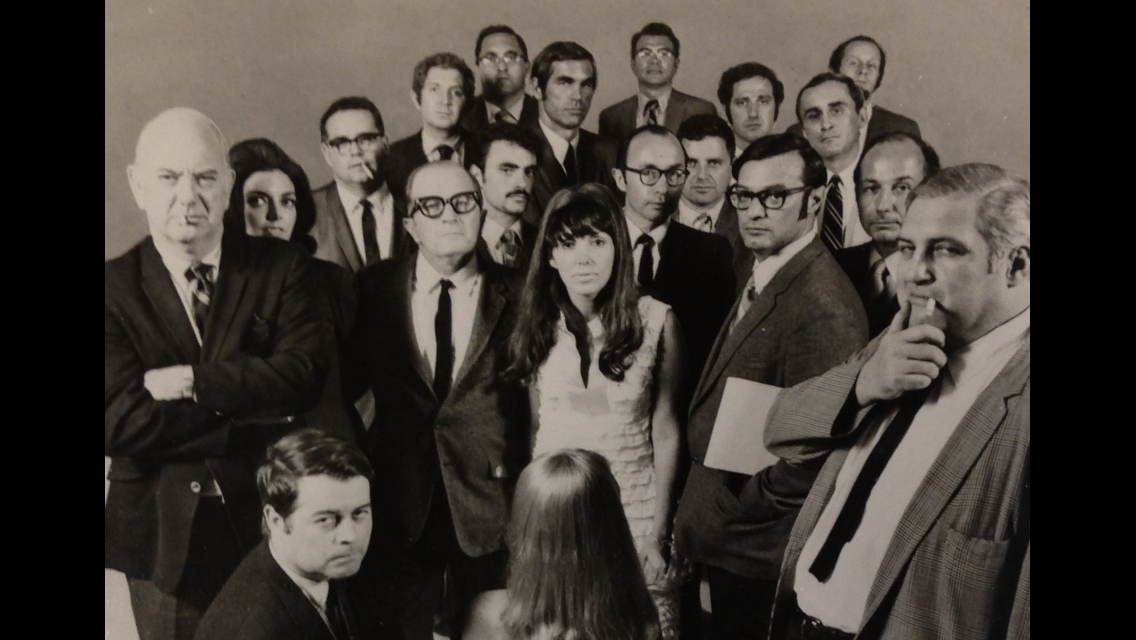|
One of the more sordid scams in the history of book publishing began 50 years ago – and I had a modest part of it.
A bunch of us from Newsday collaborated on a tale of sex in the suburbs, titled “Naked Came the Stranger.” Some people bought it and read it and thought it was not so bad. The legend does not die. The radio landmark, Studio 360, is recalling this assault on the reading habits of the American public in a podcast released Thursday evening: http://www.wnyc.org/shows/studio/segments The show was supposed to have been heard Thursday evening on WNYC-FM (93.9) in New York but apparently there was other news, and it was broadcast on Saturday. It was fun to hear the able producer Sam Kim recreate the foolishness that began with a late-night conversation at a bar frequented by journalists, cops and criminals and other people who stay up late. (I was not there.) From that conversation, Mike McGrady, a columnist, and Harvey Aronson, feature writer and wily manager of the Nightside softball team, decided to collaborate on a book about a woman looking for revenge on her philandering husband, by seducing every male in her Long Island suburb. McGrady and Aronson set up some basic ground rules – mainly, descriptions of the main character's hair and figure – and invited people to contribute individual chapters of their fetishes and fantasies. I found a request in my mailbox and assumed I was one of the chosen few. (Later I discovered McGrady and Aronson had stuck a copy in just about every mailbox at the office.) They say writers should stick to what they know. I was (and remain) a rather boring husband and father with no personal knowledge of the “cheatin’ side o’ town,” as the country songs say. So I wrote about a schlubby suburbanite and his lovely wife, busy renovating their old house. While tending to his lawn, he gets seduced. Having taken typing in junior high school, I finished my chapter in half an hour. I wrote as artfully as I possibly could and turned it in. Weeks later, McGrady and Aronson told me my level of writing was exactly what they wanted. At the time, I thought it was a compliment. Let me say a word about the Newsday of the mid-60’s, how it quivered with energetic young people, many recruited from the city. I still consider that Newsday as “we,” the way ball players talk lovingly about their first club, where they learned to play the game. By 1969, I had moved on to the Times, as the book, doctored up (or down) by McGrady and Aronson, was emitted, under the name of Penelope Ashe, actually somebody McGrady knew. We kept the secret as long as we could, while the hoax soared toward third on the best-seller list. A few reviewers even found literary merit – a piercing look at modern suburbia. Sam Kim has tracked down some of my old pals who are still around to tell the tale, including Aronson, but Mike McGrady, so talented, has long since passed. These two fine people had the idea and did most of the work, yet they shared the not-inconsiderable royalties equally among 25 people who contributed something. I rate this as one of the most generous acts in the cut-throat history of publishing. Not everybody was charmed. A librarian in my town, Mrs Murray, would sigh and roll her eyes whenever she spotted me lurking in the book shelves. A few years later, a movie was published under the same name but without the high literary quality of our book. My mentor, the whimsical sports columnist, Stan Isaacs, rented a hansom carriage to take us in style to the porn theatre. I make no apologies for defiling the high standards of publishing. Mike and Harvey helped put our kids through college. I still mow my own lawn.
bruce
6/9/2017 05:13:52 pm
george,
George
6/9/2017 05:33:28 pm
Bruce: maybe i paid more taxes thanTrump. Who knows? But our liitle book was more socially redeeming than this guy's body of work. Oy.
bruce
6/9/2017 07:02:25 pm
george,
Brian Savin
6/9/2017 10:51:58 pm
I remember it, but mostly I remember the admission of the hoax and the criticism from other print media that couldn't resist high moral indignity that smacked of competitive opportunism....and jealousy of other people's success.
bruce
6/9/2017 11:18:44 pm
brian,
Altenir Silva
6/13/2017 03:20:16 pm
My friend, George,
Gene Palumbo
6/15/2017 02:46:43 am
Check out the podcast. It's definitely worth listening to.
Altenir Silva
6/15/2017 07:14:04 pm
I also loved hearing it. Comments are closed.
|
Categories
All
|










